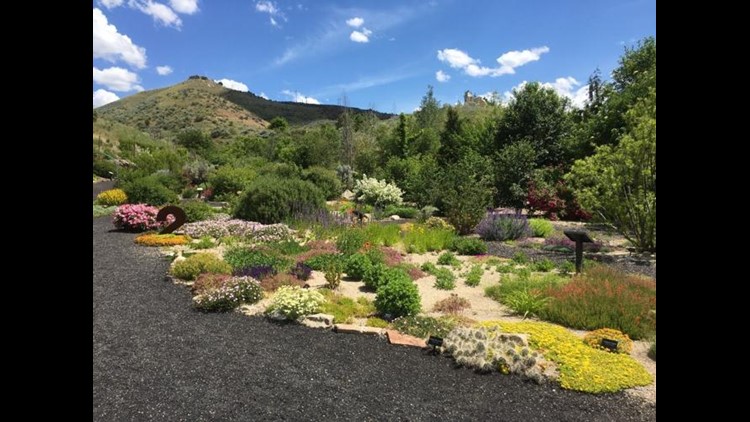BOISE, Idaho —
This article originally appeared in the Idaho Press.
Residents of the Treasure Valley looking to remodel their landscaping to be more fire resistant and drought tolerant are in luck.
On June 4, Brett Van Paepeghem, the Southern Idaho project manager for Idaho Firewise, will be giving a presentation on fire resistant landscaping at the Idaho State Museum.
Idaho Firewise is a nonprofit organization that collaborates with federal, state, and local fire agencies and tribes to educate Idahoans and visitors to the state on wildfire safety.
The presentation is being put on as part of the educational programming surrounding the museum’s temporary exhibit, “Facing the Inferno: The Wildfire Photography of Kari Greer,” which is on display until Aug. 7.
“Obviously, fire is part of our lives, in the West especially,” said Emily Chivers, curator of education for the Idaho State Museum. “And so we wanted to provide educational resources for the community.”
The presentation will address three main aspects of fire-resistant landscaping: design, plant materials and maintenance.
“Maintenance is one of the most important pieces,” Van Paepeghem said. “So even though we’re trying to choose shrubs and trees and plants that are easier to take care of, any landscape, regardless of the species, that falls into disrepair, and not being well-maintained or well-taken care of, can become a fire hazard.”
This maintenance makes fire resistant landscaping a “very” active practice that needs to be maintained and free from debris. However, the effort homeowners put in could protect them in the long run.
Van Paepeghem will present examples from the Firewise Garden he helps maintain at the Idaho Botanical Garden. He will also be drawing on his years of experience with Idaho Firewise, the Forest Service in the Payette National Forest and the Bureau of Land Management, where he worked as a plant biological tech researching plant species for fire resistance.
According to Van Paepeghem, people most at risk of wildfire tend to live in wildland urban interface, which is essentially on the periphery edges of the city where the urban meets the wildlands.
But in a time of increasing drought and higher temperatures, Van Paepeghen said, fire resistant landscaping should be on everyone’s radar. There are many “pockets” throughout the city that can be a hazard, especially in locations near one of the city’s benches.
“Just because you’re more inner city doesn’t necessarily preclude you from being at risk,” he said. “Wildfire is everybody’s problem. We all breathe the smoke half the summer long. And, you know, 85% or so of all wildfires are human-caused, so all of us play a part.”
Even so, fire-resistant landscaping isn’t just for people at risk of wildfire. According to Van Paepeghem, most of the fire-resistant plants are also drought tolerant, making them a great option for those looking to conserve water.
“Water conservation is increasingly more important, and that’s a major piece of landscaping for fire protection,” he said.
The presentation will run from 10:30-11:30 a.m. and is free to the public. The Idaho State Museum is located at 610 Julia Davis Dr. in Boise.
This article originally appeared in the Idaho Press. Read more at IdahoPress.com
Watch more Local News:
See the latest news from around the Treasure Valley and the Gem State in our YouTube playlist:



